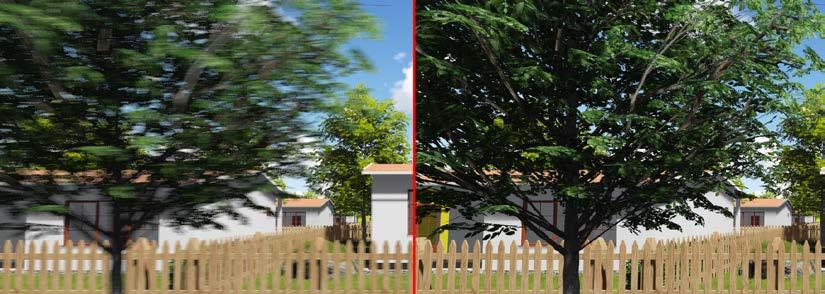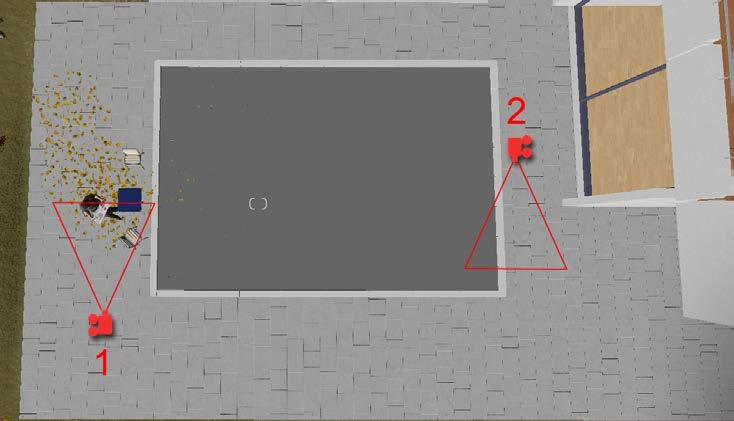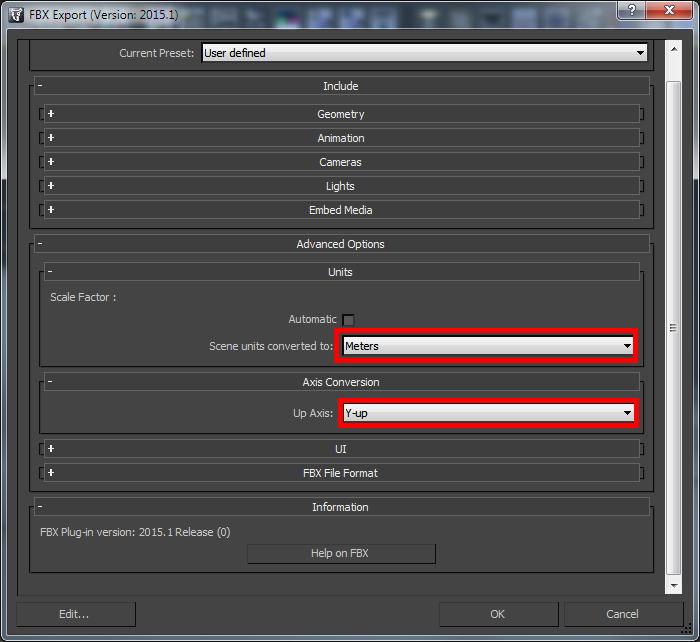
7 minute read
Importing and Handling 3D Models
by TD Garden
Importing from 3ds Max or other applications using COLLADA or FBX
We will make use of 3ds Max for this section but the same principles and settings can be used with other applications as well. The reason that only FBX and COLLADA are mentioned in this book is because they provide reliable results and therefore are the best to export complex scenes. This section is dedicated to showing you the settings that are recommended for FBX and COLLADA files.
Advertisement
Lumion gives you the opportunity to import 3ds Max files (.max), but Lumion's team still recommends COLLADA or FBX as your main file format. Do you want to know more about importing files in Lumion? Have a look at http://forum.lumion3d.com/importing/ Here, you can find more information regarding applications, such as MicroStation, ArchiCAD, and Rhinoceros, just to mention a few.
You can also make good use of the forum if you find it difficult to achieve good results while exporting the 3D model from a specific 3D application. So, if Lumion supports other file formats, why use FBX or COLLADA?
Exporting settings for FBX files
The Autodesk FBX format is used to save 2D drawings and 3D geometry into a file that maintains full fidelity and functionality of the original file and that can be manipulated by multiple programs when you create interoperability between 3D applications. However, FBX is not limited only to Autodesk products, which makes this file format a good candidate to export your 3D model. The following screenshot shows the settings that you need to correctly export the 3D model:
To export an FBX file, use the Autodesk Media & Entertainment preset and then change the settings under Advanced Options. Next, select the Units tab and choose Meters for the Scene units converted to: option. The final step is to make sure that Up Axis is set as Y-up and not Z-up.
Exporting settings for COLLADA files
The COLLADA file format is not something new and a reasonable number of 3D applications already supports this format. This is a great file format because it creates a bridge between the different 3D tools available, which include Lumion. However, you may ask, what are the benefits of using COLLADA instead of FBX?
Importing and Handling 3D Models
The reason behind using the COLLADA file format instead of FBX or any other file format is that when you export the 3D model using COLLADA, it creates a folder with the textures used and at the same time has a low possibility of error.
Keep in mind that some Autodesk products have an option to export the 3D model as Autodesk COLLADA, but this option is not very stable and doesn't offer the same options you can get using OpenCOLLADA.
You can download OpenCOLLADA from https:// github.com/KhronosGroup/OpenCOLLADA/ wiki/OpenCOLLADA-Tools.
Here, you can find the plugin for 3ds Max and Maya.
After installing the plugin and when you export a 3D model, you can find the OpenCOLLADA (*.DAE) file format that you need. The settings needed are as follows:
The Copy Images option is the one that will create a folder with all the textures inside and although this is not crucial, it is very useful and productive to have all of what you need in one location. However, does Lumion support animations? Find that out for yourself in the next section.
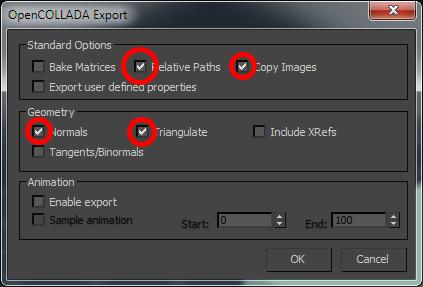
Exporting 3D animations
The answer to the previous questions is yes, Lumion supports animations. However, this support is very limited and controlling external animations is not that simple and stress-free. The animations you can import need to fulfill the following requirements:
• The frame rate should be set to 25 frames (PAL)
• Use FBX files or COLLADA but in case of the latest version, the interpolation between keyframes will be linear
• Lumion can only read move/rotate and scale keyframes which means you cannot import vertex animations, morph animations, or bone animations in this
Export the animation using the Autodesk Media & Entertainment preset (if you are using FBX) and while importing it in Lumion, don't forget to tick the Import animations option, as shown in the following screenshot:
It's true that this limits us in terms of what we can accomplish in Lumion but there is still room for some basic animation that can help your scene.
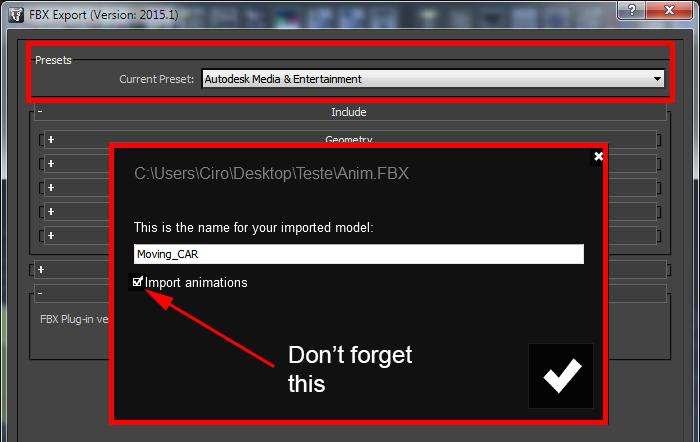
Importing and Handling 3D Models
There is another reason why animations in Lumion are not very practical and this is that once you import the animation, it will keep on playing as a loop. Imagine that you have a car moving in a straight line—here, the animation will keep on playing the same scene over and over again while you work. This can be annoying in particular when you have multiple animations in your scene, but things change once you move to the Movie mode.
Don't forget to use layers to hide these animations. It will also improve the Viewport's speed.
The easiest way to explain this is with an example: let's say we have a car moving in a straight line and the animation lasts only for 30 seconds. Since you are using 25 frames per second, this means that this small animation covers 750 frames in those 30 seconds.
In order to use this animation, you have to create a clip with no more than 30 seconds or 750 frames. Why? The golden rule is: the clip's length needs to be equivalent to the animation's length; otherwise, the animation will keep on playing in a loop.
Now, things can go wrong sometimes while importing 3D models. There are some common issues that can be easily addressed but every now and then the solution may not be that obvious. In the next topic, you will learn some of the most common problems and the practical solutions not only to solve them but to avoid future problems as well.
Common problems and their solutions
As mentioned previously, while importing 3D models into Lumion, the process is very simple and most of the time you don't face any major issues. However, after the first few projects in Lumion, you will definitely learn how to avoid them.
Rookie mistakes
These are the issues that will crop up because you are new to Lumion but with practice, these can be reduced to a minimum.
The first issue arises when you import the 3D model that is placed on the scene. The difficulty here is that you don't see the model immediately. Why? One of the reasons is that you didn't create the 3D model close to the origin axis.
The origin axis is the point where X=0, Y=0, and Z=0. Most of the 3D applications will represent this point with a red line for X, green line for Y, and blue for Z.
Every 2D and 3D application has a point called origin axis and Lumion uses this point as a reference to place the 3D model. If the 3D model is created where, let's say, X=1000m, Y=1000m, and Z=0, when it is imported you may get an image similar to this:
When you click to place the 3D model, which will be far from the location where you initially clicked. This may be something you want (we will see this later when you import large scenes) but if not, the solution is to move the objects close to the 0.0.0 point.
On the same line of thought—if you don't see the model, check the scale of the model and verify that you are using meters instead of centimeters or millimeters.
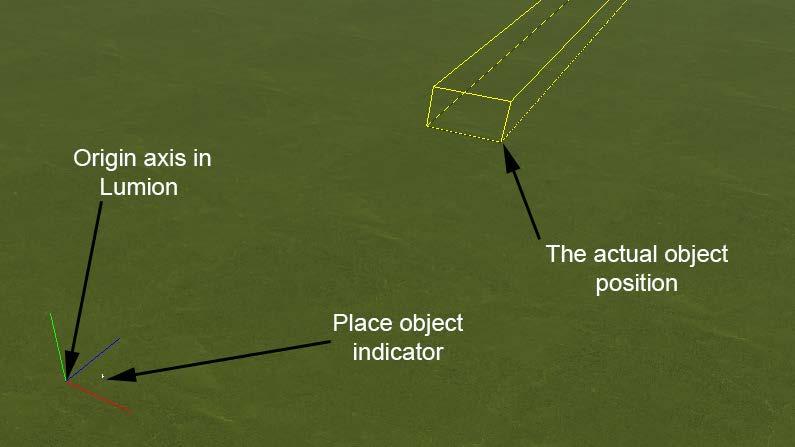
Importing and Handling 3D Models
Reversed or missing faces
During the modeling process, it is common to end up with a few reversed faces. This may not be easy to spot on a 3D application but once the model is imported to Lumion, they disappear. In the following screenshot, you will see what happens with this extremely complex geometry:
This is just an example to show you the impact of a reversed face. This situation is noticeable when you work on the exterior but keep an eye on strange shadows in the interior of your 3D model, where missing faces may not be so obvious.
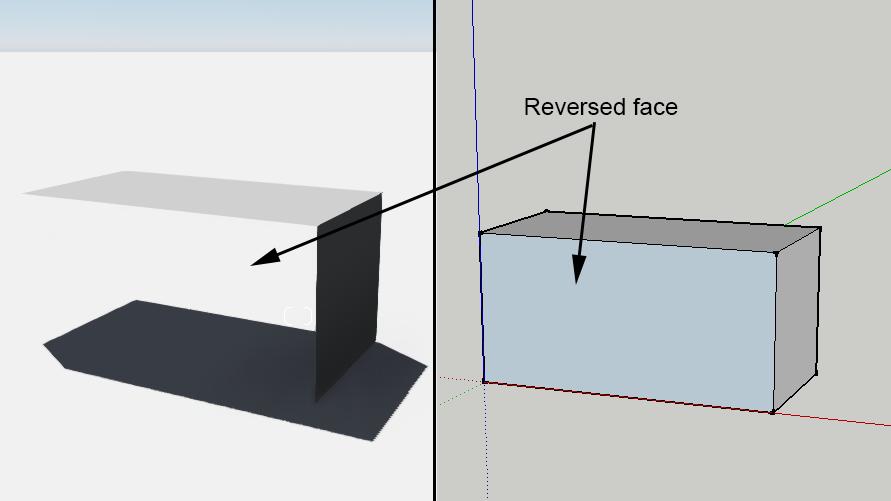
The solution for this problem will depend on the 3D application you use. The best option is to do a quick search for how to reverse the face to normal.
So, what is next? The next subtopic will cover some common problems that you may encounter while working with Lumion. These are very specific errors and hopefully all your needs will be covered in the following subheading.
Most common importing issues
Let's start with some of the most common problems that you may face while importing 3D models:
1. Problem: When you import a 3D model, Lumion crashes. Reason: Keep in mind that Lumion has limits, so when you try to import a high - poly and complex model with loads of details, this can make Lumion slow and make it crash eventually.
Solution: The best way to solve this problem is to divide the model into sections and, further in this book, you can find the best practices to do this. Also, try to simplify the areas that are not visible in the camera.
2. Problem: After importing a model from Revit, the materials inside Lumion don't match.
Reason: Some Revit materials are created using procedural textures or complex materials and cannot be converted to real-time materials. Lumion then tries to come out with the best representation based on base texture maps. Solution: The solution would be to stick to simple and basic materials and avoid procedural textures.
3. Problem: When you import a SketchUp file, Lumion crashes.
Reason: An invalid texture duplication can make Lumion crash.
Solution: Check the materials for any duplicates on textures and remove any characters, such as #, @, and & from the material and texture names.
4. Problem: While importing a file, objects shift out of place.
Reason: When the file is exported, the internal relative position is not translated properly to world coordinates.
Solution: Try to explode the 3D model because this will convert everything to world space coordinates.
5. Problem: When you import a 3D model with several objects inside, some don't appear in Lumion.
Reason: Sometimes while modeling, we import a 3D model in the modeling package that we use and export everything to Lumion. It might happen that the 3D model we imported doesn't appear in Lumion.
Solution: Try to explode the 3D models before exporting the 3D model.
6. Problem: After you reload a 3D model, a message appears informing you that there was an error while you imported the model.
Reason: When Lumion doesn't have access to the drive of the original file, it gives this import error.
Solution: You need to replace that file and while doing this, you need to set a new path for that file.




